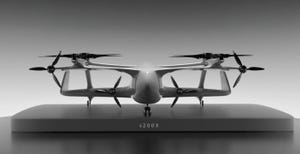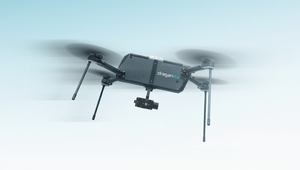Intel Shares Plummet to 50-Year Low Amid Massive Layoffs, Dividend CutsIntel Shares Plummet to 50-Year Low Amid Massive Layoffs, Dividend Cuts
Tech giant struggles to compete in AI-driven market as its stock price plummets
.png?width=1280&auto=webp&quality=95&format=jpg&disable=upscale)
Intel has suffered significant setbacks this past week as the chipmaker’s shares sank to their lowest value since 1974.
Intel’s share price dropped by 26% on Friday to just $21.48. By Monday it dropped below $20.
To put things in perspective, Intel’s share price stood at $41.80 at the start of the year.

Traders were reacting to a series of setbacks for the company, chief of which was the news that Intel was cutting 15% of its workforce, around 17,000 jobs.
The chipmaker said the job cuts were part of an effort to “resize and refocus” with plans to also reduce spending.
In addition to job cuts and layoffs, Intel also suspended its dividend starting in the fourth quarter of 2024
“Our revenues have not grown as expected… Our costs are too high, our margins are too low, said Pat Gelsinger, Intel’s CEO in a note to employees.
Gelsinger painted a bleak picture of what’s to come, as he said the “bolder actions” are needed “particularly given our financial results and outlook for the second half of 2024, which is tougher than previously expected.”
“Simply put, we must align our cost structure with our new operating model and fundamentally change the way we operate,” Gelsinger told staff.
What’s Gone Wrong at Intel?
According to the chipmaker’s CEO, Intel is “yet to fully benefit from powerful trends, like AI.”
While historically strong, Intel has found itself competing with Nvidia, which for a short time, was the most valuable company in the world.
Unlike Nvidia, which solely designs chips, Intel competes on multiple fronts, both designing and manufacturing its units, the latter pitting it against manufacturing giants like Taiwan Semiconductor Manufacturing Company (TSMC).
While the company has traditionally excelled at CPUs, the shift to AI with its large-scale GPU chips has found the company struggling to keep up.

Intel’s new Lunar Lake is set to launch in September at IFA 2024 | Credit: Intel
“Even if [Intel] could produce such designs, it would struggle to build a software ecosystem that could compete against Nvidia’s mature software stack (e.g., CUDA),” said Benjamin Lee, a professor of engineering and computer science at the University of Pennsylvania. “These difficulties are greatest in the high-performance data centers, which Intel has historically dominated, that run the most advanced AI workloads and demand the most capable hardware and mature software.”
Intel has sought to keep up with rivals Nvidia and AMD by targeting the emerging AI PC market. Its new Lunar Lake processors are four times faster at running AI workloads on a laptop while running on 40% less power.
“There may be fewer hurdles in designing AI processors on personal computers and workstations, but the software applications and whether users would adopt them is unclear,” Lee said. “[Intel] also needs to broaden its manufacturing business so that designers might turn to its foundries to fabricate chips, but here again the competition is well established and fierce (e.g. TSMC).”
What’s in Store for Intel?
As Gelsinger told staff, the financial outlook for the second half of 2024 appears tough.
Once valued at more than AMD and Nvidia combined as recently as January 2020, Intel now finds itself playing catch-up.
Intel has been facing significant challenges recently. In May, the government stripped it of its license to supply Huawei with chips. The company is also facing a class-action lawsuit over instability issues with its 13th and 14th-generation Raptor Lake CPUs, though the company found a fix in the past week.
Add to that the decision to cut jobs despite receiving up to $20 billion in government funding, including $8.5 billion in direct funding, to expand its production efforts.
The company's spending plans on new chip foundries caused Intel’s costs to soar, resulting in an operating loss of $7 billion for its foundry business last year. The new sites, which the company hopes will expand its efforts, are years away from nearing completion.
Gelsinger, a devout Christian, posted a bible verse on X (Twitter), suggesting staying focused on the path ahead will see the company through.
“Every cloud has its silver lining. Despite how Intel’s Q2 earnings may appear, industry observers are far more buoyant about its next few quarters,” said Scott Constable,
alliance director at data center infrastructure firm Vespertec. “In terms of its products, then, it’s good news everywhere you look at Intel. With a commitment to openness, new fixes and exciting hardware use cases in the spotlight over the next few months, watch this space for an impressive rebound.”
This story first appeared in IoT World Today's sister publication AI Business.
About the Author
You May Also Like
.jpg?width=100&auto=webp&quality=80&disable=upscale)
.jpg?width=400&auto=webp&quality=80&disable=upscale)
.jpg?width=700&auto=webp&quality=80&disable=upscale)
.jpg?width=700&auto=webp&quality=80&disable=upscale)

.jpg?width=300&auto=webp&quality=80&disable=upscale)


